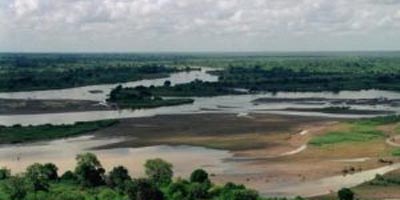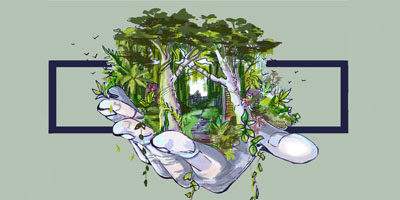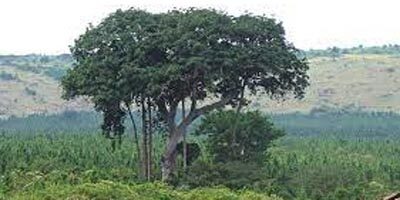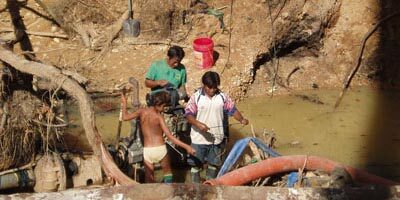In early May, 2018, a dam burst in Kenya causing floods that killed at least thirty-two people and sent forty-one to hospital. This disaster was not the first of the long rainy season this year, as extreme flooding continued. Indeed, these events have been happening for a long time, impacts of our ways of life that were predicted more than forty years ago.
Along with the article, you can view a short video about the situation here:
Climate change in Kenya
Many Kenyans are affected by climate change in their daily lives, whether they live in the arid, semi-arid or humid lands that succeed each other from the north-west to the Tana Delta.
The Tana River, in the south-east, is the largest in Kenya. Its water flow is impacted by the melting of the glaciers and by evaporation due to increasing temperature.
The Turkana River in the north-west is the second largest. It is affected by changes in precipitation patterns, with more extremes in rainfall on the one hand and droughts on the other due to increasing temperatures
“Angela” is a young woman in Nairobi who writes regularly on social media about what is happening in her country, including climate impacts, so I contacted her via email. (Note: She asked that her real name not be published.) She explained that the region at large has wet and dry seasons, with a short rainy season that used to occur from March to May, and the long rains from August to November.
However, the weather pattern is changing. She said that this year the Kenya Meteorological Department predicted that the rains will continue to the second half of the year, posing a continuing risk in flood-prone areas.
Many people who depend on agriculture activities have been severely affected.
To find out more, I communicated with Teacher Trizah, a farmer and a youth mentor in Nakuru. We had a conversation through Whatsapp and he described the impacts of climate change in his life.
He lives in Nakuru, on the floor of the Rift Valley which has experienced unpredictable rainfall patterns, floods and droughts for the last ten years. He said that not only their crops were destroyed by the rains but also that the roads become impassable, and they cannot move their products.
Trizah described different ways he is trying to deal with these changes. “I am trying to figure out where I can get funds to sink a borehole, to get an interrupted supply, and maybe construct some green houses to create a controlled environment for my crops.”
He has also been studying a concept called conservation agriculture. “It’s a model of agriculture that involves minimum soil disturbances and ensuring that the soil is always covered with vegetation even as you rotate different crops. I had heard about it in Tharaka-Nithi County here in Kenya. Together with other best agricultural practices, there is hope.”
Agriculture isn’t the only area that suffers
Tourism is a very important part of Kenya’s income, and it is becoming affected. Trizah described the impact of flooding at Lake Nakuru, a tourist attraction. “Being the home of flamingos, and seeing that the salinity of the lake makes algae grow for the flamingos’ food, when it floods the water is compromised and there is no food for flamingos. They had to be relocated.”
Heat waves, floods and storms are extreme weather events that Kenyan people have to face. Death, missing people, disease, displacement and loss of livestock are some of the consequences. Some 2.6 million people are estimated to be facing severe food insecurity, according to the UN Office for the Coordination of Humanitarian Affairs.
According to Angela, man-made aspects massively contributed to the increase in the risks, through the blockage of drainage systems and deforestation, for example. However, the country has been quite organised when these events take place. Trizah says that there are serious efforts to ensure that people are taken care of in emergencies including the work of religious and humanitarian organizations.
Andrew Fuys works with Church World Services, a US faith-based NGO, and its CWS-Africa team. He explained to me that their emergency relief process begins with the rapid assessment.
“We are in communication with a local organisation in Tana River County, Anglican Development Service. We sent a small team from the Nairobi office who went there to do the assessment, and they met the people displaced to see what the priorities are in terms of material needs.
“We are now starting with emergency food and household items, like sleeping mats, cooking materials, system for water purification, mobile latrines and shelter from the rain, like tarps.”
Fuys also said that coordination meetings happen both in Nairobi and locally to ensure a good coordination between different organisations, the government and local communities. These were just beginning when we spoke, but for now different actors seem to be cooperating, he says
Extreme climate events, such as floods and droughts, are already costing the Kenyan economy 2.4% of GDP.
The March-April-May 2018 rainfall season, with massive flooding and the displacement of thousands of families, brought the highest ever amount of rain recorded since the stations were opened.
How Kenya tried to prepare for climate change
Kenya launched its National Environment Action Plan in 1994, following the UN environmental summit of 1992. The National Environment Management Authority of Kenya (NEMA) was mandated to supervise and coordinate all matters relating to the environment.
Teacher says that NEMA is “doing a great job!” with initiatives such as banning single-use plastic shopping bags.
Even before the NEMA, Professor Wangari Maathai founded the Green Belt Movement (GBM) in 1977 to respond to the needs of rural Kenyan women who reported that their streams were drying up, their food supply was less secure, and they had to walk further and further to get firewood for fuel and fencing.
Mercy Manja Karunditu is the Senior Programme Officer with the GBM’s Climate Change and Corporate Partnership. She told me that tree planting is now the core program of the GBM (it has always been) but it also has other departments such as community empowerment, environmental education, climate change and advocacy.
“In the face of climate change, we have a department so that we can come up with activities for communities against climate change impacts, and also to empower communities and bring to the table different strategies that they can implement on their farms, so that they can adapt to the many changes that are happening. »
Other initiatives
Vision 2030 is a project launched in 2008, with the goal of guiding a long-term development blueprint for the country. In 2017, it released its Second Medium Term Plan which emphasized the need to increase production of drought-tolerant and early-maturing crops, and to increase irrigated land by a million acres, especially in Turkana and Tana Delta.
However, competition for land and water resources has become a human rights concern, since it affects the pastoral people of Turkana, for example, already the poorest region of the country. Lake Turkana is also at risk of drying further as hydroelectric development goes forward in neighbouring Ethiopia.
In 2010, a review of the Constitution of Kenya elevated environmental integrity into a human right. The same year, the government launched its National Climate Change Response Strategy, and in 2012 a National Environment Policy review aimed to provide a holistic framework to guide the management of the environment and natural resources in Kenya. It remains to be seen what the impacts of these will be.
For extreme events, there is a government agency that deals with disasters – the National Disaster Operations Centre (NDOC) under the Ministry of State for Provincial Administration and Internal Security Office of the President Unit. NDOC was established in 1998 following the adverse effects of El Nino rains.

The hills of Turkana County, in northwest Kenya. This arid region, the poorest in the country, is increasingly prone to drought.
Now a permanent entity to coordinate disaster management in the country, it is manned by officers drawn from various departments of the government, such as the Ministry of Defence, Kenya Police, Ministry of Health, Administration Police, National Youth Service and Provincial Administration. It liaises with the Regional Disaster Management Centre of Excellence, as well as the Kenya Red Cross Society and the UN Office for the Coordination of Humanitarian Affairs.
In 2015, the UN General Assembly endorsed the Sendai Framework for Disaster Risk Reduction which gives to every State “the overall responsibility for reducing disaster risk.” However, the framework also emphasizes the very important role of non-state actors as enablers in providing support to states, in accordance with national policies, laws and regulations. This is one of the aims of the Kenya Institute for Public Policy Research and Analysis, which has brought together stakeholders and partners to share perspectives on mitigating the impacts of drought and floods.
Connections between climate change and human rights
Extreme climate events impact several rights, such as self-determination, health, life, and food security. The fragility of people who are already vulnerable increases, because of their dependency on climate sensitive resources for their food & livelihoods. The degradation of agricultural land leads to increased urban migration, often to slums, with impacts on the right to an adequate standard of living.
Children are particularly vulnerable. UNICEF has reported that more than 14,000 children in Kenya require child-centred support to address safety and psychosocial needs.
“Children who have been through a traumatic event may act withdrawn or reserved. They need to re-establish a sense of normalcy in a safe space and be able to learn how to identify, express and manage their emotions,” according to Jacqueline Rioba of World Vision Kenya in a UNICEF report.

Find out more about the connections to human rights! Click here to view the Prezi presentation prepared by the author!
Sengwer indigenous people who suffered forced eviction as a result of a Water Towers Protection and Climate Change Mitigation and Adaptation project, an EU-funded water management project, were the subject of concern in an Amnesty International Kenya report in 2018.
“The Sengwer are facing repeated attacks and forced evictions by agents of the Kenya Forest Service, which is an implementing agency in the project financed by the European Union,” according to AI Kenya.
The need to respect human rights was emphasized years ago by Professor Wangari Maathai, the founder of the Green Belt Movement. “You cannot protect the environment unless you empower people, you inform them, and you help them understand that these resources are their own, that they must protect them.”
Emilie Hainguerlot
“As a student at l’Université de Montréal, I’m currently doing a cumulative BA which combines Geography and International Cooperation. I think sustainable development is a path we should use in order to build a fair society based on strong links between the environment, social issues and the economy. On the one hand, many mechanisms have to be put in place to make this work, and education is one of them so I am interested in the SJC Educonnexion program. On the other hand, the advocacy part of SJC allows me to explore complex causes that lead to social injustices we face today."








